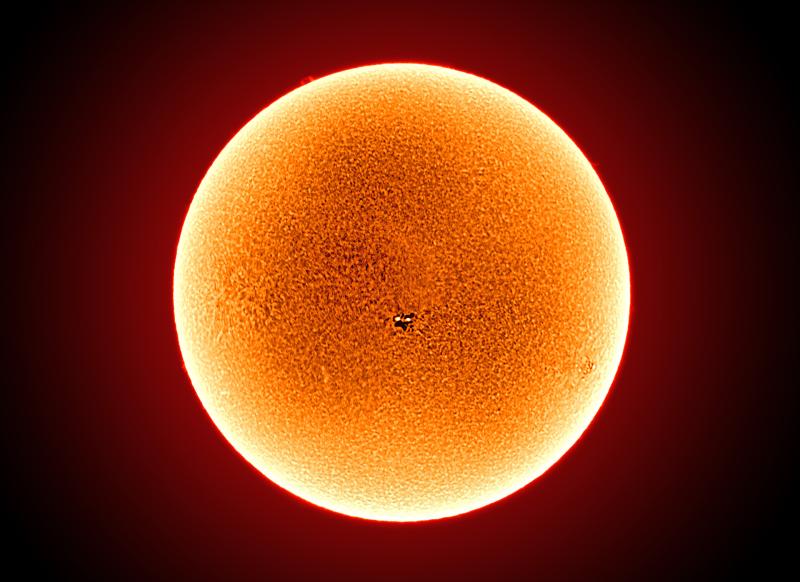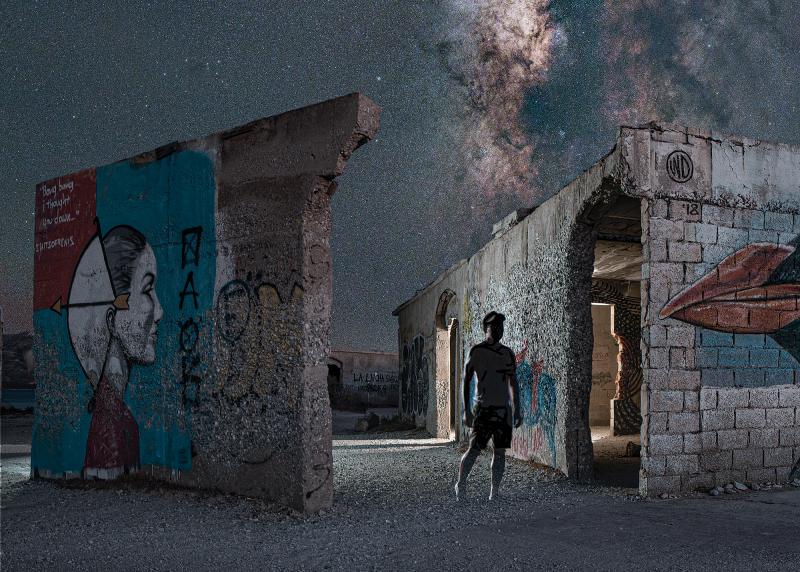
It’s a common misconception that the sky is blue because it reflects the blue of the seas and oceans.
In fact, it’s the Earth’s atmosphere, and a process known as 'scattering', that causes our skies to be blue.
Learn more with astronomers at the Royal Observatory Greenwich.
Why is the sky blue?
Here's the short answer...
As white light passes through our atmosphere, tiny air molecules cause it to ‘scatter’.
The scattering caused by these tiny air molecules (known as Rayleigh scattering) increases as the wavelength of light decreases.
Violet and blue light have the shortest wavelengths and red light has the longest.
Therefore, blue light is scattered more than red light and the sky appears blue during the day.
When the Sun is low in the sky during sunrise and sunset, the light has to travel further through the Earth’s atmosphere.
We don’t see the blue light because it gets scattered away, but the red light isn’t scattered very much – so the sky appears red.
Still interested? Keep reading after the jump for more illuminating info about light, including the colour of the sky on Mars...
What is light?
The Sun gives out or emits all the colours of visible light which we see as being approximately white.
As demonstrated by Sir Isaac Newton with a triangular prism, when white light passes through the prism it separates out into the colours of the rainbow.
This experiment demonstrates that white light is composed of all the colours of visible light in roughly the same amounts.
These different colours have different wavelengths, and this affects how they interact with different substances. Violet and blue light have the shortest wavelengths and red light has the longest.
Find more astronomy videos and resources
How is light scattered?
The Earth’s atmosphere is composed of lots of different air molecules. Sunlight can be redirected by the air molecules and this is known as 'scattering'.
The size of these molecules is much smaller than the wavelengths of visible light. The type of scattering that occurs is known as Rayleigh scattering named after Lord Rayleigh (John William Strutt) who discovered it.
This type of scattering increases as the wavelength of light decreases, so blue light is scattered more than red light by the tiny air molecules in our atmosphere.
The sky during the day
At noon, when the Sun is overhead it appears white. This is because the light travels a shorter distance through the atmosphere to get to us; it’s scattered very little, even the blue light.
During the day the sky looks blue because it’s the blue light that gets scattered the most. It’s redirected into many different directions all over the sky, whereas the other wavelengths aren’t scattered as much.
In reality, violet light has a shorter wavelength compared to blue light and therefore it’s scattered more – so why is the sky blue and why isn’t the sky violet?
It’s because human eyes are actually more sensitive to detecting blue light, and more of the sunlight coming into the Earth’s atmosphere is blue rather than violet.
Why does the sky look red during sunrise and sunset?
During sunrise or sunset, the sky appears to change colour.
When the Sun is low in the sky, the light has to travel a longer distance through the Earth’s atmosphere so we don’t see the blue light because it gets scattered away.
Instead, we see the red and orange light that travels towards us since this light hasn’t been scattered very much. Hence the Sun and skies look redder at dawn and dusk.
Skies on other planets
Other planets don’t have an atmosphere exactly like ours, and so their skies would look different.
Mars’s atmosphere is much thinner than the Earth’s - less than one per cent. The low density of air molecules means that the Rayleigh scattering that causes our skies to be blue on Earth has a very small effect on Mars.
We might expect it to have a very faint blue-coloured sky, but due to the haze of dust that remains suspended in the air the daytime sky on Mars appears more yellow. This is because the larger dust particles absorb the short wavelength blue light, and scatter the remaining colours to give a butterscotch hue over the Martian sky.
However during a sunrise and sunset on Mars, the sunlight travels a longer distance through its atmosphere and it’s alike to the thickness of the atmosphere on Earth. As such, the blue light gets scattered in all directions and the longer wavelengths of light don’t get scattered much at all – providing a blue glow to the sky around the Sun in the hours around dawn and dusk.
If you were standing on the Moon, the sky wouldn’t appear to have any colour except black.
The Moon’s atmosphere is so thin that it virtually doesn’t have one. When the air is too thin for gas molecules to collide with each other, we call it an 'exosphere' instead.
Because of the lack of an atmosphere, sunlight isn’t scattered, so whether it’s daytime or nighttime on the Moon, the sky appears black.
Why is the sea blue?
So the Earth’s sky isn’t blue due to it reflecting the colour of the seas and oceans. But what makes the sea blue – is it reflecting the blue of the sky?
It’s not the sky that makes open water appear blue. It’s once again due to how different wavelengths of light interact with different substances.
Water molecules are good at absorbing longer wavelengths of light, so when sunlight hits the water the reds and oranges get absorbed.
The shorter wavelength blue light is absorbed very little and much of it is reflected back to our eyes. It’s possible to see hues of green and sometimes other colours in the water, but that’s due to sunlight bouncing off other particles or sediments within it.
This article has been written and reviewed by astronomers at the Royal Observatory Greenwich

See the universe in a new light
Never miss a shooting star
Sign up to our space newsletter for exclusive astronomy highlights, night sky guides and out-of-this-world events.











